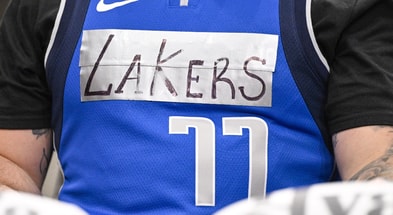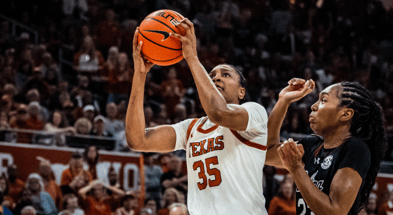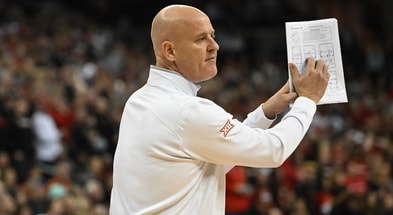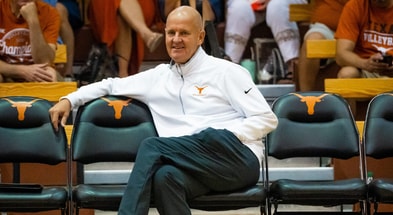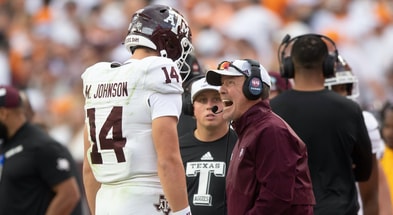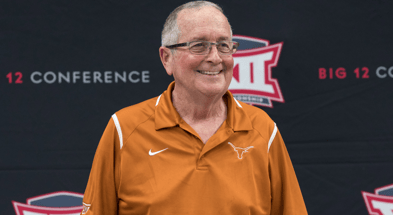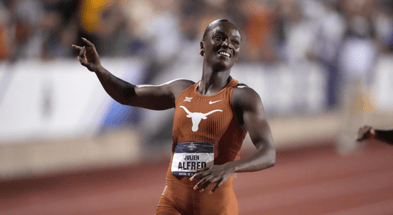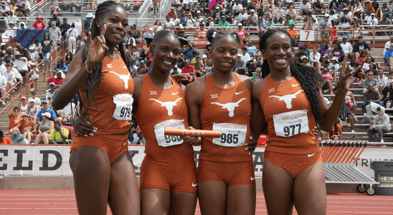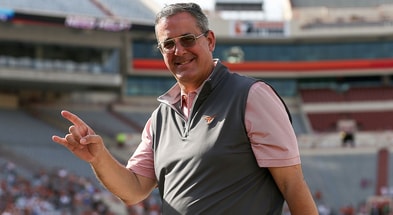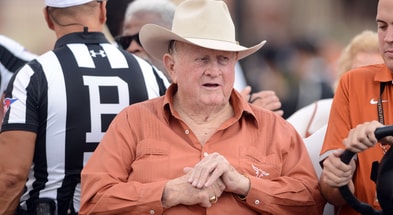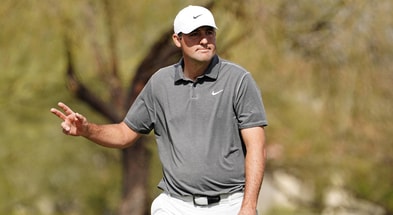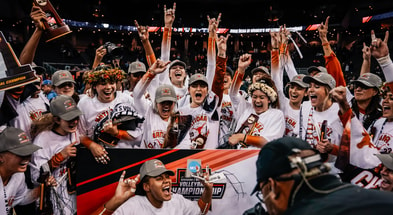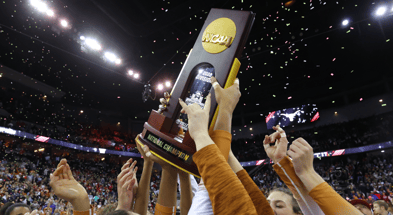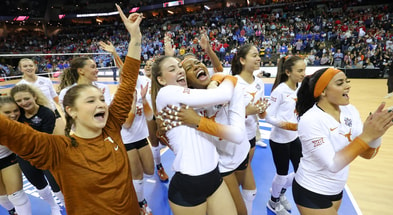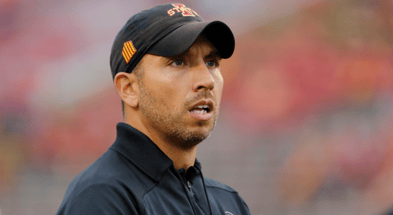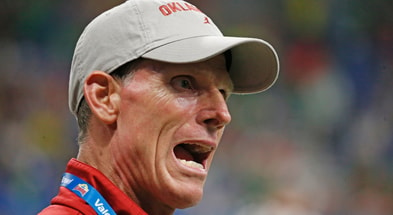Jim Knowles' path to Ohio State

Jim Knowles’ path to Ohio State makes you wonder how many other coaches are the right opportunity away from a similar windfall. The former Cornell defensive end (Go Big Red Bear) really got established at Duke under famous quarterback coach and Manning family favorite David Cutcliffe. After a six-year stint as the head coach of his alma mater where the Big Red went 26-34, Cutcliffe snagged him to coordinate the Duke Blue Devil defense and he worked there for eight years.
He was hired from there by Mike Gundy in 2018 after Gundy had finally tired of the Glenn Spencer era on defense in Stillwater and went about his normal methods for hiring a replacement. Gundy reasoned that Oklahoma State needed someone who could coach defense effectively within the limits of not having the top recruits in the league. His defensive coordinator would also face innovative offensive systems managed by opponents who were loading the best recruits into the skill positions of their offenses. Nearly a decade of solid results at Duke with weaker recruiting than their ACC opponents gave Gundy confidence Knowles could be the man.
Things also went well at OSU, particularly after their initial 2018 season within the new scheme. The 2021 OSU Cowboys were powered by a phenomenal defense which lead them to the Big 12 Championship game where they came within inches of winning. Now? For $1.9 million a year Knowles will bring his tactics honed in underdog programs to “third base” program Ohio State with their hordes of blue chip recruits.
How’s this going to work?
Knowles at Oklahoma State
There were a few interesting quirks to Knowles’ defense at OSU. They got better literally every single season, as you can see clearly from their defensive FEI rankings over the years.
| Year | Defensive coordinator | Defensive FEI | PPG allowed | Record |
| 2017 | Glenn Spencer | 46th | 29.4 | 10-3 (6-3) |
| 2018 | Jim Knowles | 79th | 32.5 | 7-6 (3-6) |
| 2019 | Jim Knowles | 46th | 26.8 | 8-5 (5-4) |
| 2020 | Jim Knowles | 14th | 23.5 | 8-3 (6-3) |
| 2021 | Jim Knowles | 2nd | 18.1 | 12-2 (8-2)* |
Knowles had them playing at their previous level by year two and then they climbed in an amazing fashion as his younger players up grew in the program. Here’s the first interesting quirk though about the Knowles Cowboy defense.
Allow me to present to you, the 2021 starting lineup:
| Position | Player | Experience before 2021 |
| Field DE | Tyler Lacy: RS junior | Starter in 2019 & 2020 |
| Nose | Israel Antwine: Senior | Starter in 2018 (CU), 2019, & 2020 |
| Boundary DE | Brendon Evers: RS senior | Main back-up in 2018, starter in 2019 & 2020 |
| Edge | Brock Martin: RS senior | Main back-up in 2018, starter in 2019 & 2020 |
| Mike | Devin Harper: RS super-senior | Main back-up in 2018, 2019, & 2020 |
| Will | Malcolm Rodriguez: RS super-senior | Starting Saf in 2018, LB in 2019 & 2020 |
| Left CB | Jarrick Bernard-Converse: Senior | Starting Saf in 2018, CB in 2019 & 2020 |
| Field safety | Tanner McCalister: Senior | Main back-up in 2018 & 2019, starter in 2020 |
| Middle safety | Jason Taylor: RS junior | Main back-up in 2020 |
| Boundary safety | Kolby Harvell-Peel: Senior | Starter in 2018, 2019, & 2020 |
| Right CB | Christian Holmes: RS senior | Starter in 2018, 2019 (MZ), and 2020 |
Everyone in the starting lineup, save for true freshman Collin Oliver who came in regularly and did have a massive role we’ll get to later, was a 4th-6th year player and most were returning starters. Indeed most of them had been starters or key contributors for all or nearly all of the Jim Knowles tenure at Oklahoma State.
The Cowboys could run a TON of scheme and mix in all kinds of looks, fronts, and coverages while executing them all seamlessly due to their vast levels of experience and also the maturity of being older and having played in a lot of games against Big 12 offenses. Don’t count out also the value of being in OSU’s strength and conditioning program for a long time under Rob Glass, who’s always helped the Cowboys get an edge in fielding disciplined and physically strong teams.
Another interesting quirk about the Cowboys was their defensive scheme, which was a blend of the new three-deep safety “flyover defense” strategies, 3-3-5 stack defense, and typical 4-2-5 nickel defense.
Here was a typical pre-snap look:

The L is the “Leo,” which is their Edge hybrid position. In this case he’s not lined up on the edge but over a guard. They’d stack him behind the nose tackle at times, mug him over a guard like here, or he’d line up as a traditional Edge. In any event, he’d generally always have simple, aggressive rules. The next quirk was lining up their nickel/cover safety at depth across from the slot. From here they could do any of the following:
They could drop into a Cover 2 look with the nickel moving down into a more traditional alignment while the other two safeties bailed deep.
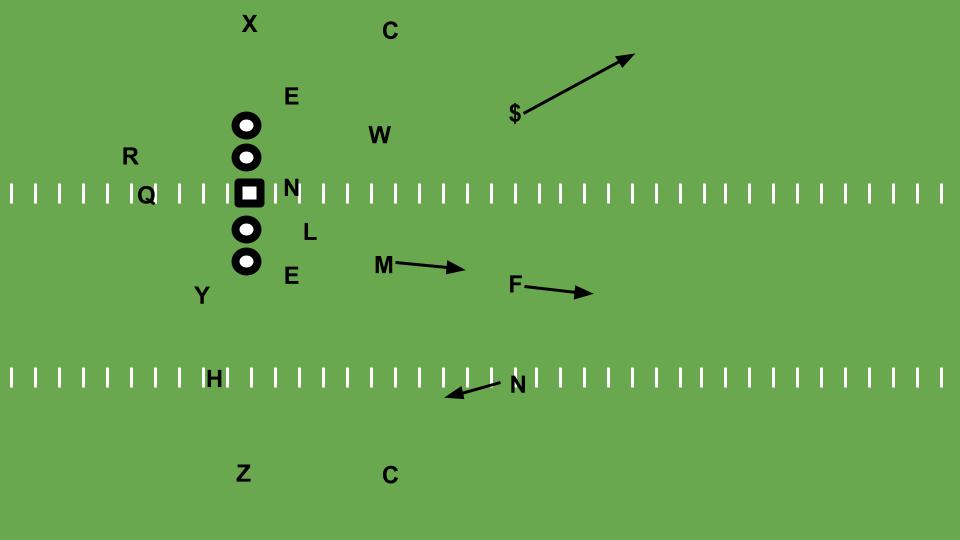
They could bracket the slots with the safeties and play man coverage outside (this was a favorite).
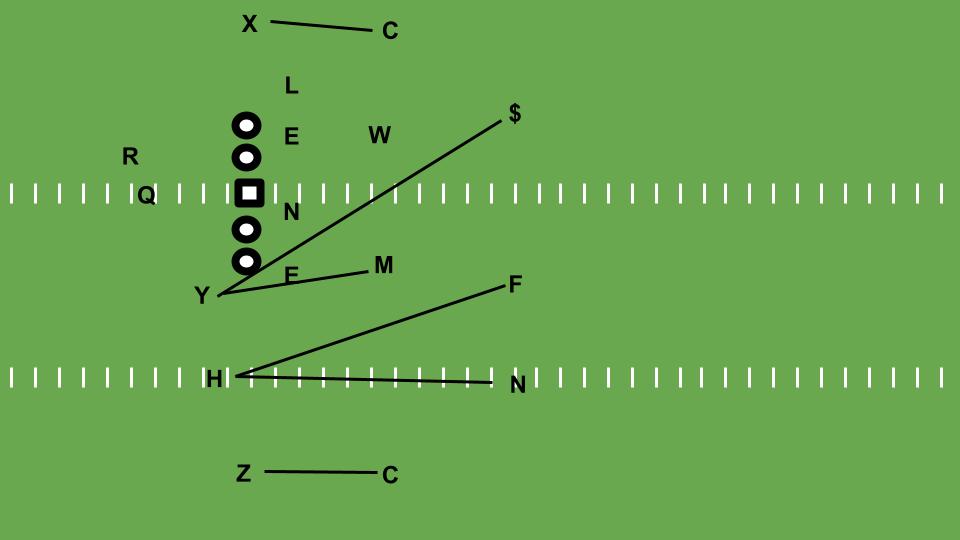
They could play Tampa 2 with the middle safety as the deep “Mike” linebacker.”
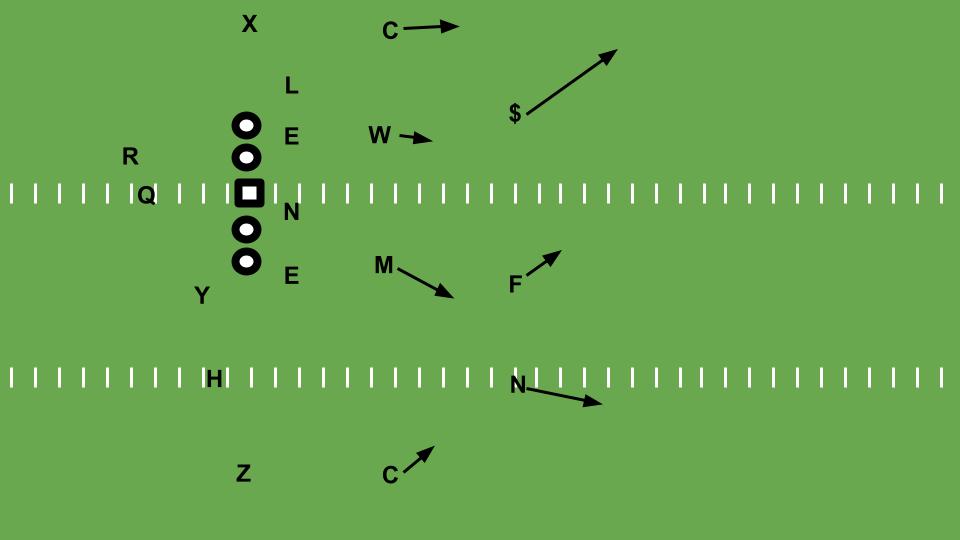
And then another of their favorite calls was to blitz. Something you had to respect about Knowles is that he didn’t spend a ton of time on Fire Zone or Zone replacement blitzes. When he sent the dogs after someone, he typically sent them in packs of six or more. Especially in the red zone where offenses could always count on facing very heavy pressure.

The D-line and Leo could play a variety of different fronts in all of this as well, mixing 3-down and 4-down looks to keep the O-line off base. If you were a quarterback tasked with trying to understand your protections and who you needed to track on the blitz while also sussing out coverage…well it was a tough gig.
All of this gave OSU a ton of multiplicity and flexibility in dealing with Big 12 offenses. It’s also important to note the nature of their personnel, which added to their ability to disguise and adjust.
Disguise was an essential component to OSU’s success over the last few years on defense. Big 12 offenses HAD been torching opponents with RPO/play-action heavy spread attacks operated at tempo. They’d line up, see what the defense was doing, then attack them in space with run/pass conflicts and pick up yardage in big chunks while defensive linemen wore down. OSU thwarted this by giving the quarterback muddy pre-snap reads with the three-deep safety looks obfuscating where there would be space or run/pass conflicts to attack and the front threatening to kill a drive with pressure if the offense wasn’t properly prepared to block everyone they needed to block.
Additionally, they had some quick linebackers such as Will Malcolm Rodriguez, who was a converted safety and could handle dropping into coverage. Then they had a pair of big safeties at strong and free safety in Kolby Harvell-Peel (6-foot-0, 215 pounds) and Jason Taylor (6-foot-0, 215 pounds) who could credibly drop into the box and serve as extra linebackers or wipe out receivers trying to run past the linebackers on quick RPO slants. The middle of the field was an amorphous blob of athletic, reasonably big, versatile football players.
Top 10
- 1New
Johntay Cook
Sets visit, schools show interest
- 2Hot
Kryen Lacy agent
Calls out sheriff, NFL after death
- 3Trending
Rylan Griffen
Back to SEC?
- 4
Urban Meyer
Crushes state of NIL
- 5
FSU Shooter
Police identify shooter
Get the On3 Top 10 to your inbox every morning
By clicking "Subscribe to Newsletter", I agree to On3's Privacy Notice, Terms, and use of my personal information described therein.
The cover safety/nickel outside and the cornerbacks were man-coverage capable players they’d often leave on islands. If teams wanted to put extra blockers on the field those big safeties would drop down tighter (maybe seven-to-eight yards) and be downhill against the run game in an instant. If teams wanted to spread them out, they could play a bunch of different coverages and disguise who’d be getting safety attention and who wouldn’t.
2021’s Big 12 with its dearth of great quarterbacks, was totally overmatched and most of its offenses were destroyed.
Knowles in Columbus
It’s a fairly mixed bag trying to ascertain how Knowles’ confusing schemes will translate in Columbus with Ohio State’s roster. There are a few obvious positives for Knowles in taking over the Ohio State defensive machine.
One positive is Ohio State’s abundance of good athletes at cornerback who have been coached up in playing man coverage. Much of Knowles’ success came from using big safeties to gang up on inside routes and the run game, eliminating easy throws and reducing run/pass conflicts. You could find 1-on-1 matchups outside on the cornerbacks, but the Cowboys were able to consistently field guys like Rodarius Williams and Christian Holmes who held up well enough outside in man coverage. It was always a question mark for OSU but for tOSU it’ll be easier to maintain the quality needed at corner as they’ve always asked a lot of their cornerbacks and recruited well.
Similarly, the Cowboys relied on having very good and versatile defensive linemen to move around and create different fronts while creating angles for their Edge player to attack in. Ohio State has Larry Johnson coaching the D-line still and can churn out terrific players there as well. Much of the system was oriented around setting up athletes at “Leo” to go attack opponents, but Ohio State has tended to have defensive ends so good they don’t need much help to dominate games. Presumably they’d do even better in this system.
The question marks are biggest at linebacker and safety. Ryan Day’s philosophy on defense until now has been to employ very simple defensive schemes oriented around matching up in man coverage or simple, single-high zones and out-athleting opponents with execution. This was breaking down in spectacular fashion in 2021 when they were struggling at safety and (particularly) linebacker to execute base schemes.
Knowles’ program will ask even more of them in sorting out different alignments and leverages in all of his fronts and coverages. This is where having 4th-6th year players in all of those positions made all the difference.
Ohio State can roll through young, blue chip cornerbacks in this scheme who will play man coverage at least as often as not and Larry Johnson should help ensure the defensive linemen are able to do all that’s asked. How will it go rolling young blue chips in at linebacker and safety? They can simplify early on as the Buckeye defenders who poorly executed a few simple schemes are brought up to speed in fundamentals, but ultimately what makes this system work at a high level is fielding versatile players in the middle of the field who can move around.
It’s completely counter to the strategy of say, keeping Pete Werner on the tight end, Shaun Wade on the slot, cornerbacks on outside receivers, and the linebackers in the box. The simpler cover 4/man schemes Ohio State mixed in last year will be closer to the Knowles’ method, but only the beginning.
Like many coordinators, Jim Knowles made his name by developing tactics to make up for an inability to leverage a talent advantage. The COVID exemption gave him a chance to really expand on those tactics with a big year in 2021. Now he’ll need to translate it all to a resource-rich program where getting buy-in and good fundamentals from star players is more the hangup than overcoming talent deficiencies. If he can make the switch, Ohio State will be able to upgrade their tactics and get back to dominating the Big 10.
Can Jim Knowles’ versatile, hybrid defense put Ohio State back on top of the Big 10? Discuss for free on the Flyover Football board!

